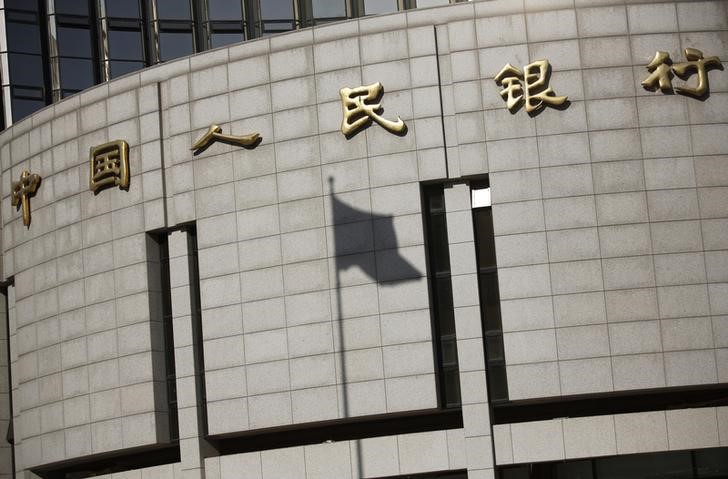(Bloomberg) -- Chinese investors face a complicated outlook for markets as they return after a week-long holiday.
They’ll be reconciling last week’s turmoil in Hong Kong, where equities just had their worst week since February, with increasingly supportive measures from China’s central bank. Looser monetary policy may help stem some of the losses expected onshore after the five-day break, indicated by a slump in a U.S. fund tracking A shares, as well as pressure on China’s currency and government bonds from the surging dollar and higher Treasury yields.
The People’s Bank of China cut the amount of cash lenders must hold as reserves for the fourth time this year, effective Oct. 15. The move followed last week’s long list of bleak news, including weak manufacturing data, a close call between a U.S. and a Chinese destroyer in the disputed South China Sea, a North American trade deal that’s set to sideline China, accusations of election meddling and a Bloomberg News report that the country spied on U.S. companies.
“We are not surprised to see the RRR cut given mounting economic growth pressure, sizable seasonal liquidity demand, and weak investor sentiments,” Jerry Peng, a strategist at Citigroup Inc (NYSE:C). in Hong Kong, wrote in a note. “We reckon the authorities will step up intervention to support RMB in view of the RRR cut. Overall, we believe the RRR cut should be regarded as a positive move.”
The offshore yuan weakened as much as 0.3 percent Monday to near a seven-week low.
Hong Kong stocks lost 4.4 percent in the four days through Oct. 5 after a holiday Monday, some of the worst declines in the world. A prediction of a “full-blown trade war" next year by JPMorgan Chase & Co (NYSE:JPM). strategists added to the gloom. One victim was Lenovo Group Ltd., down as much as 23 percent Friday on concern that the PC-maker was tied to the Beijing hack. Lenovo later denied it was supplied by the manufacturer featured in the Bloomberg article.
All eyes will be on where the PBOC decides to fix the currency. At stake is whether policy makers allow it to weaken in line with the offshore rate, or whether it opts for a stronger-than-expected fixing to signal support for the yuan. Traders dumped the yuan in Hong Kong as the dollar surged, sending it past the 6.9 level for the first time since August.
Surging Treasury yields have set the tone for China’s bond market. The past week’s moves mean that Chinese 10-year government debt, which hasn’t traded since Sept. 28, yields only slightly more than the U.S. benchmark 10-year rate, shrinking the spread to the narrowest since 2011. Rising inflation concerns in China suggests government debt is unlikely to be a haven for the risk averse in the fourth quarter.
JPMorgan was the latest brokerage to turn more cautious on Chinese stocks, saying the trade conflict will only escalate as the U.S. maxes out tariffs on Chinese imports, the dollar strengthens and the yuan weakens further. That follows similar moves by strategists at Morgan Stanley (NYSE:MS), Nomura Holdings Inc. and Jefferies Group earlier this year.
“Things don’t look so good,” Hao Hong, Bocom International Holdings Co.’s chief strategist in Hong Kong, said before the PBOC cut the required reserve ratio. “Depreciation pressures on the yuan will persist, bonds probably won’t work as a shelter for risk, and the national team’s influence on the equity market is waning. Stocks are of secondary concern for the top when there are bigger fish to fry.”
